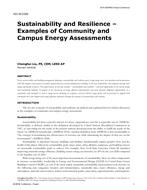Sinusoidal wavy fins can help enhance heat transfer in plate-fin heat exchangers and thus improve their performance for many different applications (air-conditioning, regeneration, and waste-heat recovery). In this study, single-phase, periodically developed, laminar forced convection in sinusoidal wavy-fin heat exchangers is considered, with the corrugated plates subjected to uniform wall temperature. 2D simulation results for Fanning friction factor f and Nusselt number Nu are presented for air, water and oil (Pr = 0.7, 5, 35, 150) flows with Re = 10 – 1000 and different fin geometries (corrugation aspect ratio γ, fin spacing ratio ε). The fluid field and heat transfer performance are strongly influenced by both the fluid condition and fin geometry. Specifically, with low Re, Pr, and gentle waviness, the fluid tends to flow along the wavy channel geometry without swirl generation, and the increased convection behavior can be ascribed to the enlarged effective surface area. As Re, and γ increase, lateral vortices are generated in the waviness troughs, which contribute to significant fluid mixing and consequent heat transfer enhancement. The influence of ε is more complex, as both very large and very small fin spacing ratios cause the decrease of friction factor and heat transfer coefficient. A swirl parameter is introduced based on force balance analysis and new correlations for friction factor and Nusselt number are developed using asymptotic fitting method. A correlation of optimized fin spacing ratio is also proposed based on constant pressure drop for air flows. The correlations match the available simulation results well, and they can be used to design fin geometries and to predict thermal-hydraulic behavior of wavy-fin heat exchangers.
Citation: 2017 Winter Conference, Las Vegas, NV, Conference Papers
Product Details
- Published:
- 2017
- Number of Pages:
- 8
- Units of Measure:
- Dual
- File Size:
- 1 file , 2.1 MB
- Product Code(s):
- D-LV-17-C082


